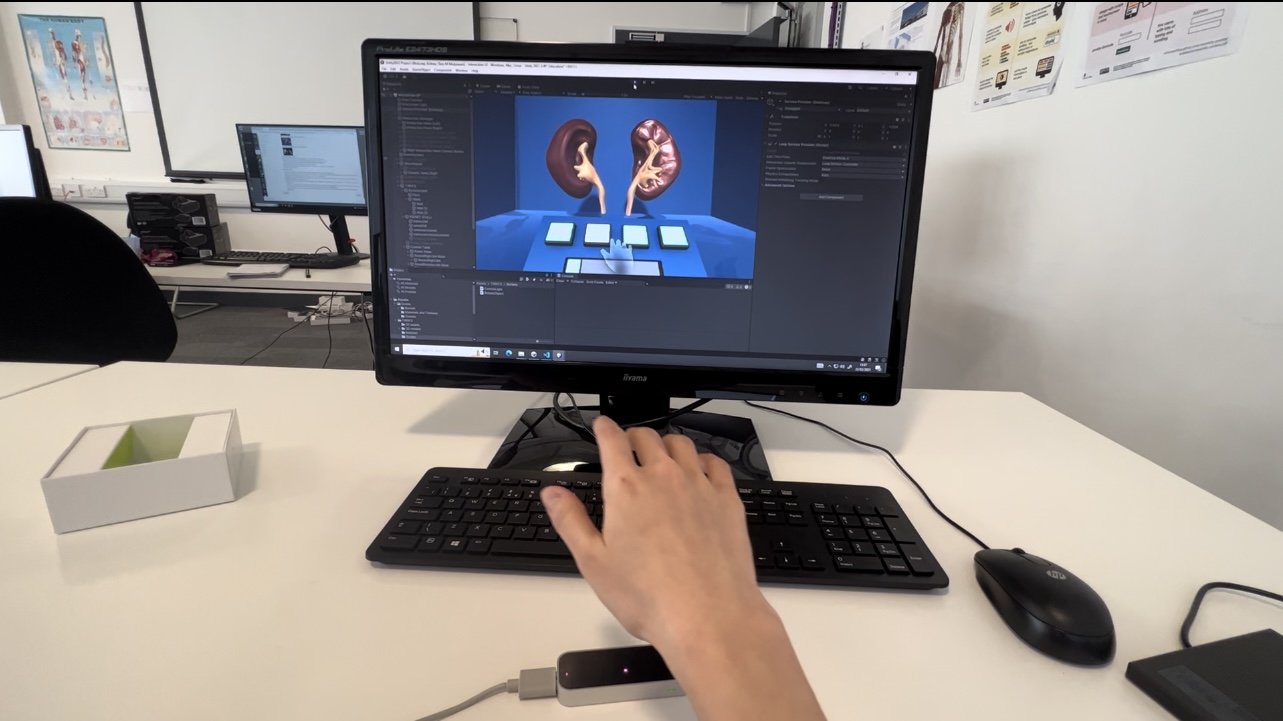Tara M. Mulyawan

Tara is a medical doctor with a deep passion for visuals, firmly believing in the intrinsic connection between art and science. Following her medical degree, she decided to pursue further education in Medical Visualisation and Human Anatomy. Over the past year, she has dedicated herself to mastering a wide range of technologies to visually express the abstract concept of medicine. While Tara previously focused on 2D media, she has now explored the field of 3D visualization, including 3D modeling, 3D data reconstruction derived from patients’ medical imaging data, and interactive applications.
Tara’s belief in the potential of merging technology and art to enhance the quality of medical practice drives her enthusiasm to bridge these two fields. Looking ahead, she aspires to apply her skills and knowledge to contribute to the field of medicine through the visual aspects.

MASTER’S PROJECT
Most medical faculties in Indonesia still maintain the traditional learning approach, such as cadaveric dissection and PowerPoint-based lectures. However, technology-enhanced learning, particularly interactive digital 3D applications, has been recognized as highly beneficial, especially in enhancing spatial understanding of the relationship between structures, compared to the traditional approach.
Introducing “MRA Learning,” a web-based interactive application dedicated to educating about cerebral Magnetic Resonance Angiography. This application combines the 3D anatomy of a normal cerebral arterial system with clinical applications of common vascular pathologies that can be diagnosed by MRA. The project’s aim is to serve as a supportive learning tool for medical students, facilitating a comprehensive understanding of MRA concepts and the anatomy of brain vascularization. Notably, this application is built in 2 languages (English and Bahasa) and is easily accessible through desktop platforms.
Developed as a part of the thesis project during the master’s degree in Medical Visualization and Human Anatomy at The Glasgow School of Art and the University of Glasgow, this project is expected to serve as an initial step in increasing awareness and interest in the broader implementation of interactive 3D applications as complementary learning tools in Indonesian medical education.
Project link: https://taramudita.itch.io/mraleaning
3D DATA RECONSTRUCTION
With the aid of technology, it is possible to create 3D models through the reconstruction of 2D medical imaging data, such as CT scans and MRI images. These are examples of 3D reconstruction using open-source visualization software, employing both direct and indirect volume rendering techniques. These 3D models serve multiple purposes, including patient education and treatment planning, as they offer spatial information of complex anatomical structures.


















